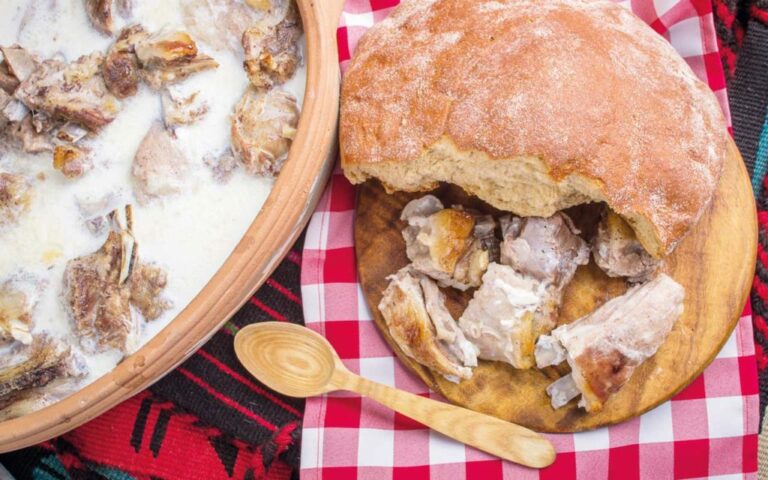Introduction: The allure of Montenegrin cuisine
Montenegro is a small country in Southeast Europe that boasts a rich culinary heritage. Montenegrin cuisine is influenced by its neighboring countries like Serbia and Croatia, as well as the Ottoman Empire, which ruled the region in the past. With its fresh seafood, hearty stews, and flavorful meats, Montenegrin cuisine is a must-try for food lovers.
Understanding the Montenegrin culinary culture
Montenegrin cuisine is deeply tied to the country’s history and geography. The coastal region is known for its seafood, while the mountainous regions are famous for their hearty stews, roasted meats, and wild game. Montenegrins also take pride in their homegrown produce, such as olives, figs, and grapes, which are used to make local specialties like prosciutto and cheese.
Meals in Montenegro are often leisurely affairs, where family and friends gather to enjoy good food and company. Hospitality is a central value in Montenegrin culture, and hosts will often go out of their way to make guests feel welcome.
Where to find authentic Montenegrin restaurants
To experience an authentic Montenegrin dining experience, it is recommended to seek out locally owned restaurants that specialize in traditional cuisine. In coastal areas like Budva and Kotor, look for seafood restaurants that serve fresh catches from the Adriatic Sea. In the mountainous regions, seek out restaurants that offer hearty meat dishes or traditional stews like the famous kacamak or popara.
It is also worth checking out local markets, where you can find fresh produce and artisanal products like honey, olive oil, and cheese. Many markets also have small eateries that serve traditional dishes.
Must-try dishes for a taste of Montenegro
Some of the must-try dishes in Montenegro include:
- Black risotto (crni rižot): a rich seafood dish made with cuttlefish ink, rice, and spices.
- Njeguški steak: a grilled pork steak served with locally made prosciutto and cheese.
- Kačamak: a hearty cornmeal porridge served with cheese and cream.
- Priganice: fried dough balls that are often served as a savory snack, but can also be dipped in honey for a sweet treat.
Etiquette tips for dining like a local in Montenegro
When dining in Montenegro, it is important to follow local customs and manners. It is customary to greet the host and other guests with a handshake, and to wait for the host to invite you to sit down. It is also polite to try a bit of everything that is served, even if it’s not your favorite dish.
When drinking alcohol, it is traditional to offer a toast before taking the first sip. It is also customary to leave a small tip, usually around 10% of the total bill.
Conclusion: Savoring the flavors of Montenegro
Montenegrin cuisine is a reflection of the country’s rich history and geography, and offers a unique blend of flavors and influences. By seeking out locally owned restaurants and trying traditional dishes, visitors can experience an authentic taste of Montenegro. By following local customs and manners, they can also enjoy the warm hospitality and convivial atmosphere that are an integral part of the Montenegrin dining experience.

